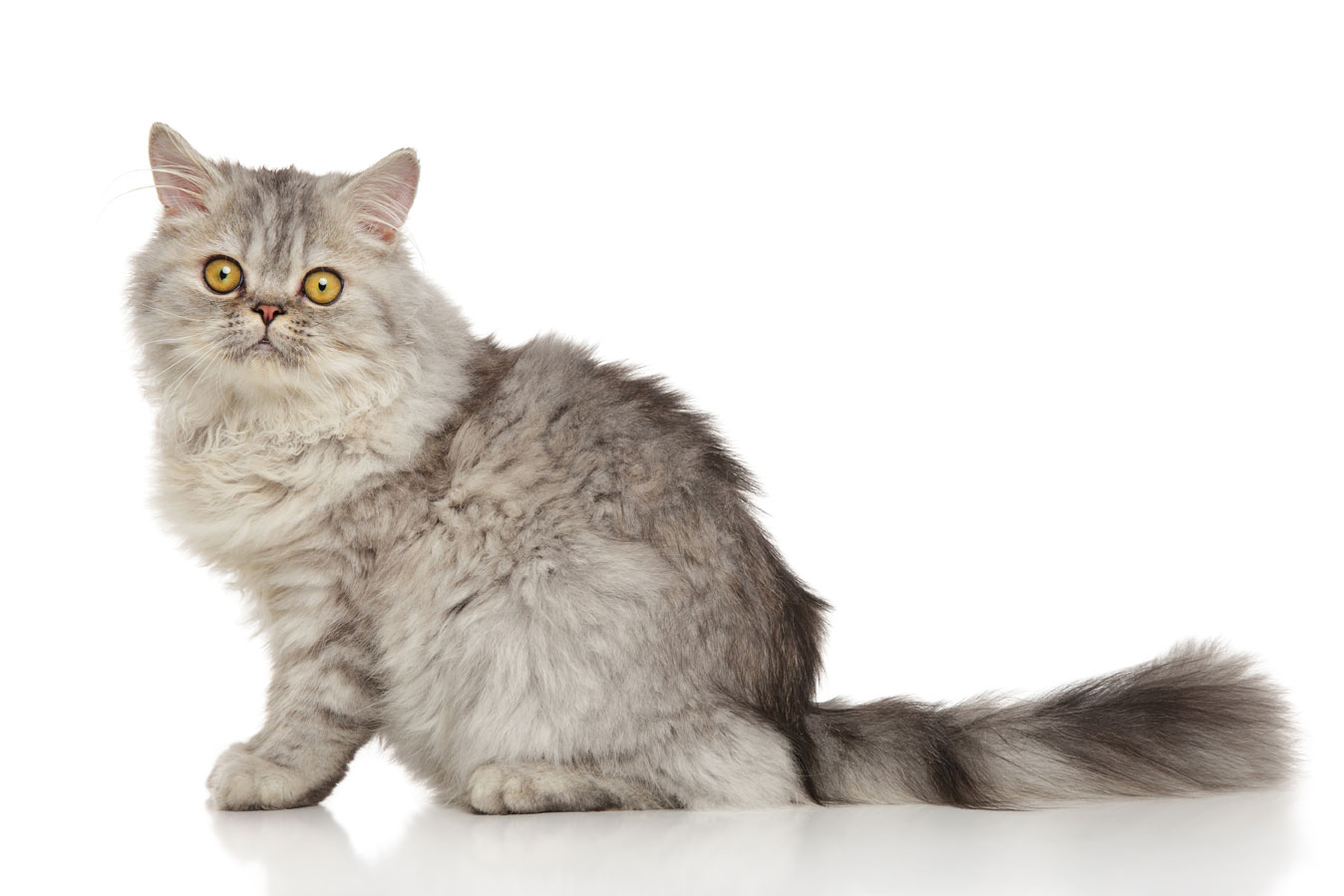So you’re interested in learning about Persian cats and their adaptability to different environments? Well, you’ve come to the right place! Persian cats are known for their striking appearance and luxurious coats, but there’s so much more to these feline companions. In this article, we’ll dive into the various environments Persian cats can adapt to, whether it’s a cozy apartment or a bustling family home.
Persian cats are often favored for their calm and gentle nature, which makes them adaptable to different living situations. Whether you live in a small apartment or a spacious house, Persian cats can thrive as long as they have access to basic necessities such as food, water, and a clean litter box. They are generally not as demanding of space as some other breeds and are content to lounge around and enjoy a peaceful environment.
However, it’s important to note that Persian cats can be sensitive to extreme temperatures and may not do well in extremely hot or cold environments. If you live in an area with extreme weather conditions, it’s advisable to provide appropriate temperature regulation for your Persian cat, such as air conditioning during hot summers or cozy heating during chilly winters.
So, as you can see, Persian cats have a remarkable ability to adapt to different environments, as long as their basic needs are met. In this article, we’ll delve even deeper into the specific characteristics and traits that make Persian cats so adaptable, as well as provide some tips for creating a comfortable living space for your feline friend. Stay tuned for more in-depth information about Persian cats and their amazing adaptability!
Persian Cats and Their Adaptability to Different Environments
Persian cats, with their luxurious coats and distinctive features, have become one of the most beloved cat breeds around the world. Known for their calm and gentle nature, these feline companions are highly adaptable to various environments. Whether you live in a hot or cold climate, in a bustling household or a quiet apartment, Persian cats can thrive and bring joy to your life.
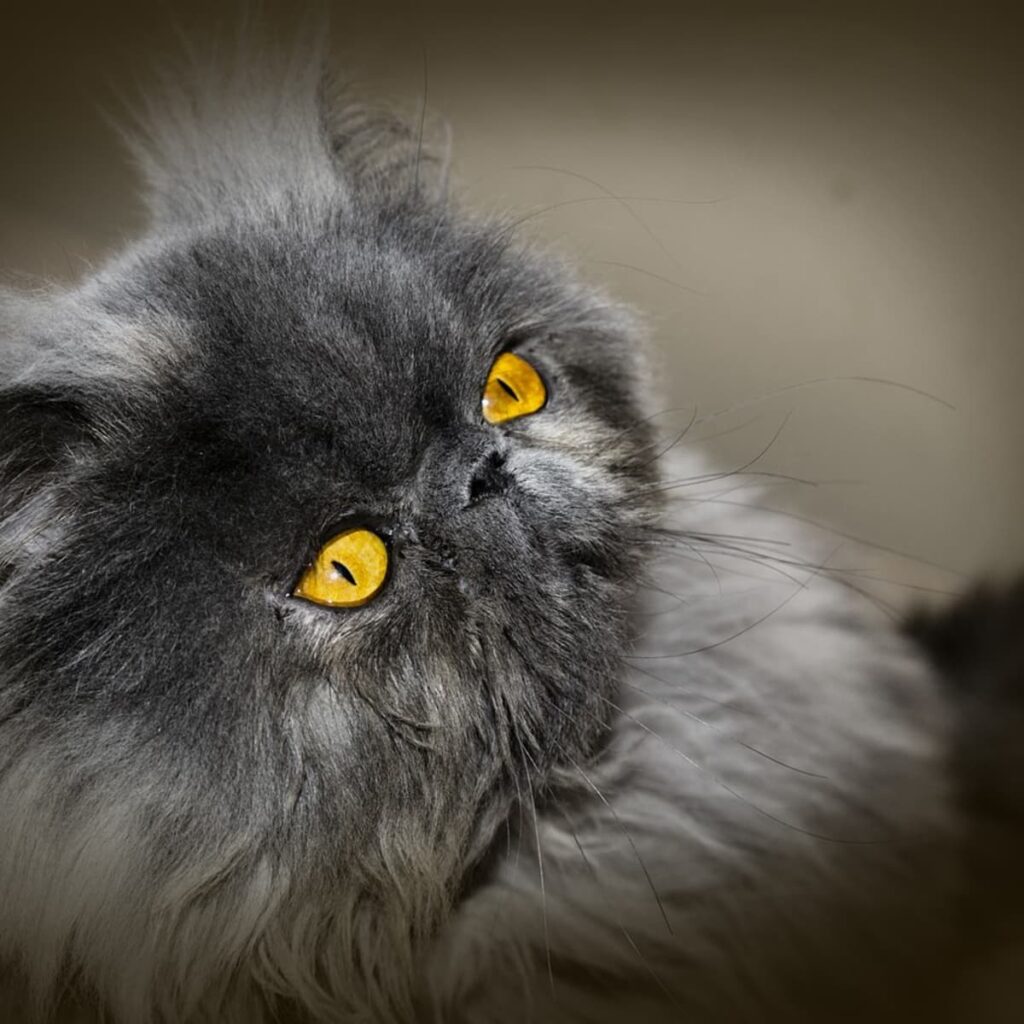
Origins of Persian Cats
The origins of Persian cats can be traced back to ancient Persia, which is now modern-day Iran. These cats were highly regarded and cherished by Persian nobility and royalty. It is believed that Persian cats were selectively bred from long-haired cats imported from Turkey and Afghanistan.
Persian Cats in Ancient Times
Persian cats have a rich history and have been depicted in ancient art and literature. They were often portrayed in ancient Persian manuscripts, showcasing their esteemed status. These cats were seen as symbols of elegance, grace, and power.

Development of Modern Persian Cats
During the 19th century, Persian cats were brought to Europe, where the breed was further refined. Various breeders played a significant role in shaping the modern Persian cat by focusing on its distinct physical features, such as the round face, short muzzle, and long, silky coat.
Physical Characteristics of Persian Cats
Distinctive Coat of Persian Cats
One of the most striking features of Persian cats is their luxurious coat, characterized by long, silky fur. This coat requires regular grooming to prevent mats and tangles. Persian cats come in a wide range of colors and patterns, including solid, shaded, and tabby.
Facial Features of Persian Cats
With their round faces, large round eyes, and small ears, Persian cats have an adorable and expressive appearance. Their noses are short, and their jaws are strong, giving them a unique and distinct facial structure.
Body Structure of Persian Cats
Persian cats have a medium to large-sized body with a robust build. They have short, strong legs and a broad chest. Despite their compact physique, Persian cats exude a sense of grace and elegance in their movements.
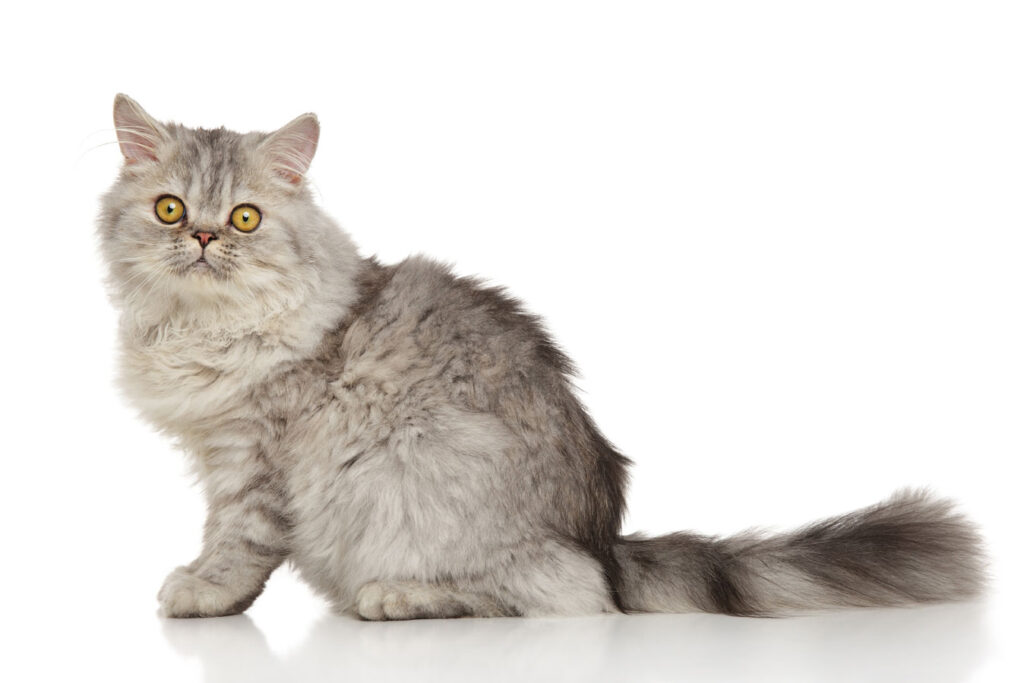
Behavior and Temperament of Persian Cats
Personality Traits of Persian Cats
Persian cats are known for their sweet and gentle nature. They are calm, affectionate, and love to be around their human companions. Persian cats enjoy a peaceful and serene environment and are generally not as active or playful as some other cat breeds.
Adaptability to Different Environments
One remarkable quality of Persian cats is their adaptability to various environments. They can thrive in both spacious homes and small apartments. Their calm demeanor makes them ideal companions for individuals living in bustling cities or quiet suburbs.
Interaction with Humans and Other Pets
Persian cats form strong bonds with their human family members. They are friendly and enjoy socializing with their loved ones. Persian cats also have an amiable nature towards other pets, making them suitable for households with multiple animals.
Health and Care of Persian Cats
Common Health Issues in Persian Cats
Like all cat breeds, Persian cats are prone to certain health issues. Due to their facial structure, they may experience breathing difficulties. They are also susceptible to eye problems, dental issues, and polycystic kidney disease. Regular veterinary check-ups and proper care are essential for maintaining their health.
Grooming Needs of Persian Cats
The Persian cat’s long and luxurious coat requires regular grooming to prevent mats and tangles. Daily brushing is recommended to keep their fur in pristine condition. Bathing should be done occasionally, using cat-friendly shampoos and conditioners.
Tips for Proper Nutrition and Exercise
Proper nutrition is crucial for the overall well-being of Persian cats. It is essential to provide them with balanced, high-quality cat food that meets their specific dietary needs. However, Persian cats are not overly active and may require encouragement to engage in regular exercise. Interactive toys and playtime can help keep them physically stimulated.
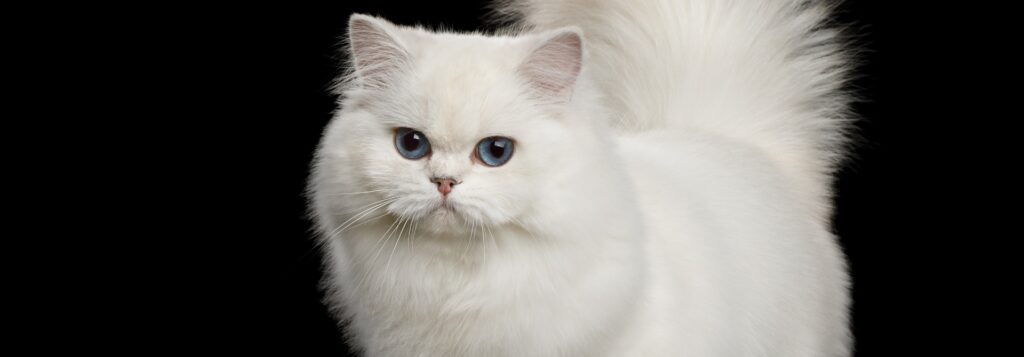
Training and Socialization of Persian Cats
Importance of Early Socialization
Early socialization plays a vital role in shaping the behavior of Persian cats. It is crucial to expose them to various people, sounds, and experiences from a young age. This helps them develop confidence and adaptability, making them well-rounded and sociable companions.
Basic Training Techniques for Persian Cats
While Persian cats are generally well-behaved and easy to train, it is essential to establish basic training routines. Teaching them commands like “sit,” “stay,” and “come” can help create a harmonious relationship between the cat and its owner. Positive reinforcement techniques, such as using treats and praises, work well with Persian cats.
Dealing with Behavioral Issues
Persian cats, like any other breed, may occasionally exhibit behavioral issues. These can range from scratching furniture to aggressive behavior. Consistency, patience, and understanding are key when addressing these issues. Consulting with a professional animal behaviorist can provide valuable guidance in handling such concerns.
Persian Cats as Family Pets
Suitability for Families with Children
Persian cats are known for their gentle and calm temperament, making them well-suited for families with children. However, it is crucial to supervise interactions between the cat and young children to ensure both parties are safe and comfortable.
Handling and Playing with Persian Cats
When handling Persian cats, it is essential to be gentle and mindful of their delicate structure. Avoid pulling on their fur or tail, as this may cause discomfort. Engaging them in gentle play sessions with interactive toys can help keep them mentally stimulated and provide a bonding experience.
Creating a Safe Environment for Persian Cats
Creating a safe environment is essential to ensure the well-being of Persian cats. Cat-proofing the house by removing hazardous items, such as toxic plants or small objects that could be swallowed, is crucial. Providing them with scratching posts, cozy beds, and high perches allows them to satisfy their natural instincts and feel secure.
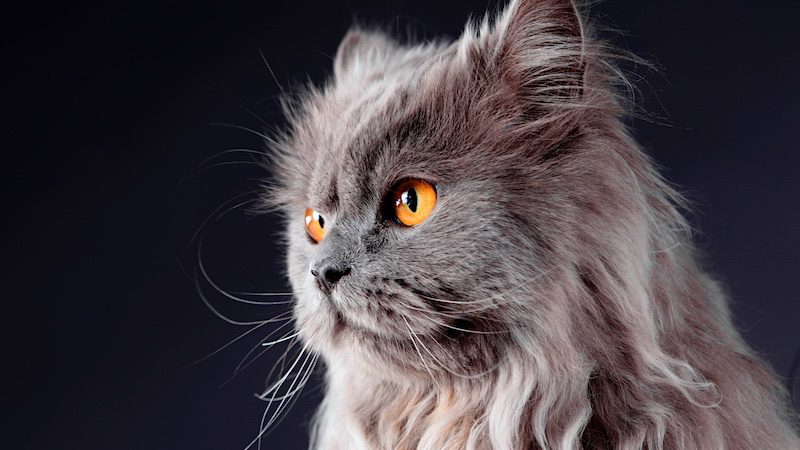
Showing and Breeding Persian Cats
Standards for Show-Quality Persian Cats
Show-quality Persian cats must adhere to specific standards set by cat associations and breed organizations. These standards include criteria such as coat color, head shape, eye color, and body conformation. Showing Persian cats can be a rewarding experience for breeders and exhibitors who are passionate about maintaining and promoting the breed’s excellence.
Responsible Breeding Practices
Responsible breeding is essential to ensure the health and welfare of Persian cats. It involves genetic testing to reduce the risk of hereditary diseases, providing proper veterinary care, and ensuring kittens receive adequate socialization before going to their new homes. Responsible breeders prioritize the well-being of their cats and work towards improving the breed’s overall health and temperament.
Participating in Cat Shows
Cat shows provide an opportunity for cat enthusiasts to showcase their Persian cats and compete with other breeders and exhibitors. These events celebrate the beauty and characteristics of different cat breeds, including Persian cats. Cat shows also offer a platform for breeders and enthusiasts to network, exchange knowledge, and learn from experienced judges.
Famous Persian Cats in History and Pop Culture
Notable Persian Cat Breeds
Throughout history and in popular culture, Persian cats have held a prominent place. Some notable Persian cat breeds include the Chinchilla Persian, Himalayan Persian, and Exotic Shorthair. Each breed has its unique characteristics that make them highly sought after by cat enthusiasts.
Persian Cats in Art and Media
Persian cats have been a beloved subject in various forms of art and media. Paintings, photographs, and illustrations have showcased their beauty and charm. Persian cats have also been featured in movies, television shows, and books, further cementing their place in popular culture.
Celebrity Persian Cat Owners
Persian cats have caught the attention of many celebrities across the globe. Famous personalities such as Karl Lagerfeld, Taylor Swift, and Ed Sheeran have all been proud owners of Persian cats. These celebrities often share adorable pictures and stories of their feline companions, contributing to the breed’s popularity.
Persian Cats in Different Climates
Adaptability to Hot Climates
While Persian cats have long coats, they can adapt to hot climates with proper care. Providing them with a cool environment, access to fresh water, and grooming to help regulate their body temperature can ensure their well-being in warmer regions.
Adaptability to Cold Climates
Given their thick and plush coats, Persian cats are well-equipped to handle colder climates. Their fur acts as insulation, keeping them warm in chilly weather. However, it is essential to provide them with a cozy indoor space and limit their exposure to extreme cold temperatures.
Caring for Persian Cats in Extreme Environments
In extreme environments, such as extremely hot or cold regions, extra precautions must be taken to ensure the well-being of Persian cats. Monitoring their hydration, providing proper shelter, and consulting with a veterinarian for specific care instructions are crucial in such situations.
Persian Cats and Allergies
Understanding Allergies to Cats
Cat allergies can be a concern for some individuals. Persian cats, like other breeds, produce allergenic proteins, primarily found in their saliva, skin, and urine. These proteins can trigger allergic reactions in sensitive individuals.
Hypoallergenic Persian Cat Breeds
Although no cat breed is completely hypoallergenic, certain Persian cat breeds may produce fewer allergenic proteins and may be better tolerated by individuals with allergies. It is advised to spend time with the specific cat breed before bringing one home to ensure compatibility and minimize allergic reactions.
Minimizing Allergic Reactions
To minimize allergic reactions, individuals with allergies to cats can take several measures. Regular grooming and bathing of the Persian cat can reduce the amount of allergens present on their fur. Keeping the living space clean, using air purifiers, and maintaining good personal hygiene can also help alleviate allergies.
Myths and Misconceptions about Persian Cats
Persian Cats and Intelligence
One common myth about Persian cats is that they are not as intelligent as other cat breeds. While they may not be as inherently curious or active, Persian cats are known for their problem-solving abilities and can be trained to perform various tricks and commands.
Persian Cats as High-Maintenance Pets
Another misconception about Persian cats is that they require excessive grooming and are high-maintenance pets. While their long coat does require regular brushing and occasional bathing, this can be easily managed with proper care routines. Persian cats thrive on routine and consistency rather than demanding excessive attention.
Persian Cats and Aggressiveness
Contrary to popular belief, Persian cats are generally not aggressive. They have a gentle and docile nature, making them ideal companions for individuals seeking a calm and loving pet. Negative behaviors, such as aggression, can be the result of improper socialization or underlying medical issues.
Persian Cats in Different Cultures
Symbolism and Beliefs Associated with Persian Cats
Persian cats hold symbolism and have been associated with several beliefs in different cultures. In some cultures, they are believed to bring good luck and prosperity, while in others, they are seen as sacred and mystical creatures. These cultural beliefs further enhance the allure surrounding Persian cats.
Persian Cats in Folklore and Mythology
Persian cats have made their way into various folklore and mythology. In Persian folklore, they are often associated with tales of wisdom and mysticism. The story of “The Grey Cat,” a popular Persian folktale, depicts the adventures and wisdom of a cunning feline companion.
Cultural Significance of Persian Cats
The cultural significance of Persian cats extends beyond their physical attributes. They have become representative of elegance, beauty, and grace in many cultures. Their presence in literature, art, and symbolism showcases the profound impact they have made throughout history.
Rescuing and Adopting Persian Cats
Benefits of Adopting a Persian Cat
Adopting a Persian cat can be a rewarding experience for both the cat and the adopter. By providing a loving home to a rescued Persian cat, adopters can give these beautiful animals a second chance at a happy and fulfilling life. Adoption also helps relieve the burden on animal shelters and rescue organizations.
Finding Rescue Organizations for Persian Cats
There are many rescue organizations dedicated to finding loving homes for Persian cats in need. Researching and reaching out to local rescue groups, as well as checking online platforms and social media, can help individuals find reputable organizations through which they can adopt a Persian cat.
Tips for Successfully Adopting a Persian Cat
Successfully adopting a Persian cat involves careful preparation and consideration. It is essential to understand the breed’s specific needs, including grooming requirements and potential health issues. Providing a safe and nurturing environment, along with regular veterinary care and proper nutrition, ensures the well-being of the adopted Persian cat.
Conclusion
Persian cats are truly remarkable creatures, with their stunning appearance and gentle nature. Their adaptability to different environments allows them to thrive and bring joy to a wide range of households, from busy families to individuals seeking a calm companion. By appreciating their unique charm and providing them with proper care, we can forge lifelong bonds with these magnificent feline companions.
At PersianCatDude.com, we are passionate about providing reliable and engaging content about Persian cats. If you have any more questions or need further information about Persian cats, here are some frequently asked questions:
-
How often does a Persian cat need grooming?
- Persian cats require daily brushing to prevent mats and tangles. Occasional bathing is also recommended to keep their coat in pristine condition.
-
Do Persian cats get along with dogs?
- Persian cats generally have a friendly and amiable nature towards other pets, including dogs. Proper introductions and supervised interactions are crucial to ensure a harmonious relationship.
-
Are Persian cats suitable for apartment living?
- Yes, Persian cats can adapt well to apartment living. They are generally calm and do not require excessive exercise. However, providing them with an enriched environment is important to keep them mentally stimulated.
-
How often should I take my Persian cat to the vet?
- Regular veterinary check-ups are essential for the health and well-being of Persian cats. Annual visits, vaccinations, and dental check-ups are recommended, along with addressing any specific health concerns.
-
Can Persian cats be left alone for long periods?
- Persian cats are generally independent and can handle short periods of alone time. However, they thrive on human companionship and may become lonely if left alone for extended periods. It is important to provide them with mental stimulation and toys when alone.
-
Are Persian cats good with children?
- Persian cats have a gentle and calm nature, making them well-suited for families with children. However, it is important to teach children how to interact respectfully with cats and supervise their interactions.
-
Are Persian cats prone to eye problems?
- Persian cats are prone to various eye problems, including excessive tearing, eye infections, and corneal ulcers. Regular eye care and veterinary check-ups can help prevent and address these issues.
-
What is the average lifespan of a Persian cat?
- Persian cats have an average lifespan of 12 to 16 years. With proper care, including regular veterinary check-ups, balanced nutrition, and a safe environment, they can live long and healthy lives.
-
Do Persian cats shed a lot?
- Persian cats do shed, but their long fur tends to stay on their bodies rather than spreading around the house. Regular grooming and brushing help minimize shedding and prevent mats.
-
Can Persian cats be trained to walk on a leash?
- Yes, Persian cats can be trained to walk on a leash. It is important to introduce them to a harness and leash gradually and provide positive reinforcement during the training process.
